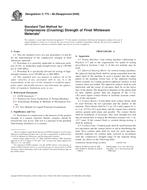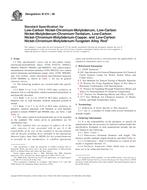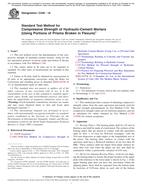1.1 This practice covers asphalt-rubber cape seal, which is defined as the application of an asphalt-rubber seal coat placed onto an existing pavement surface, followed by the application of a conventional Type II or III slurry seal.
Note 1 – An asphalt-rubber seal coat is also known as a stress absorbing membrane (SAM) which consists of an asphalt-rubber membrane seal followed by the application of precoated aggregate chips.
1.2 An asphalt-rubber cape seal is commonly used to extend the service life of low to medium trafficked and moderately distressed asphalt-surfaced pavements. The existing pavement condition can be used to determine the application rates for the asphalt-rubber binder and aggregate as well as the aggregate gradation. Pavements in relatively poor condition will require a coarser aggregate with a higher binder application rate.
1.3 The values stated in either SI units or inch-pound units are to be regarded separately as standard. The values stated in each system may not be exact equivalents; therefore, each system shall be used independently of the other. Combining values from the two systems may result in non-conformance with the standard.
1.4 This standard does not purport to address all of the safety concerns, if any, associated with its use. It is the responsibility of the user of this standard to establish appropriate safety and health practices and determine the applicability of regulatory limitations prior to use.
Product Details
- Published:
- 08/01/2009
- Number of Pages:
- 7
- File Size:
- 1 file , 240 KB


